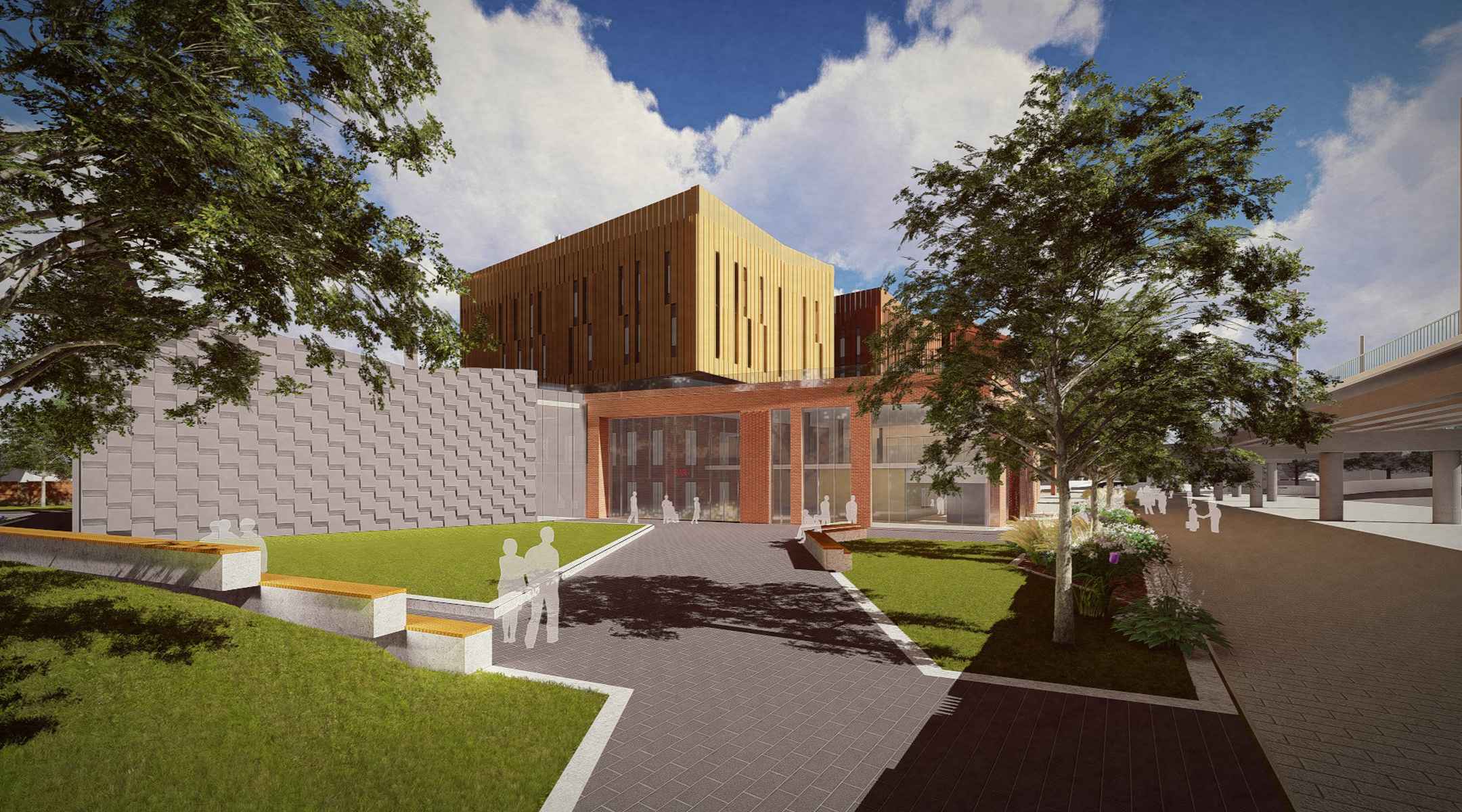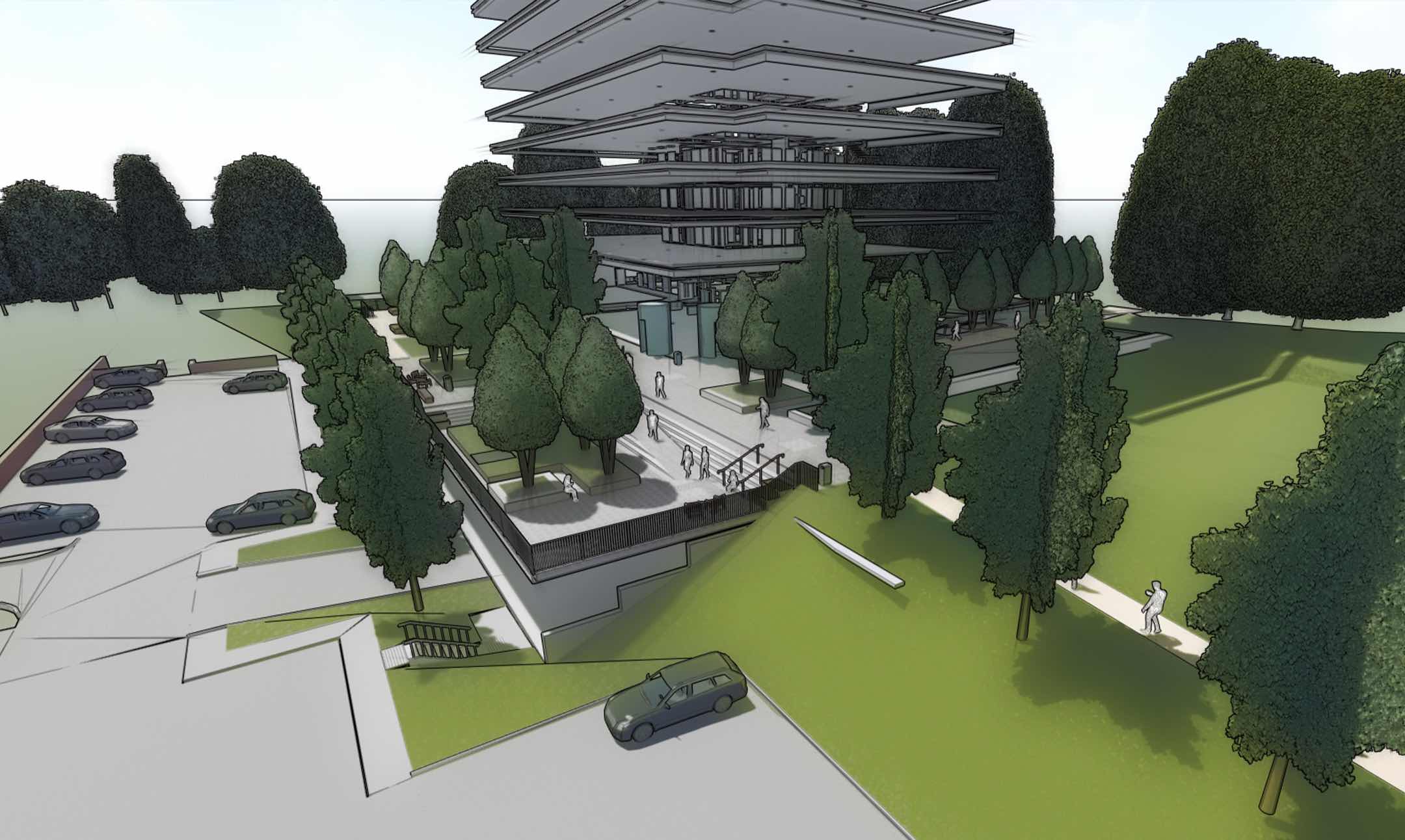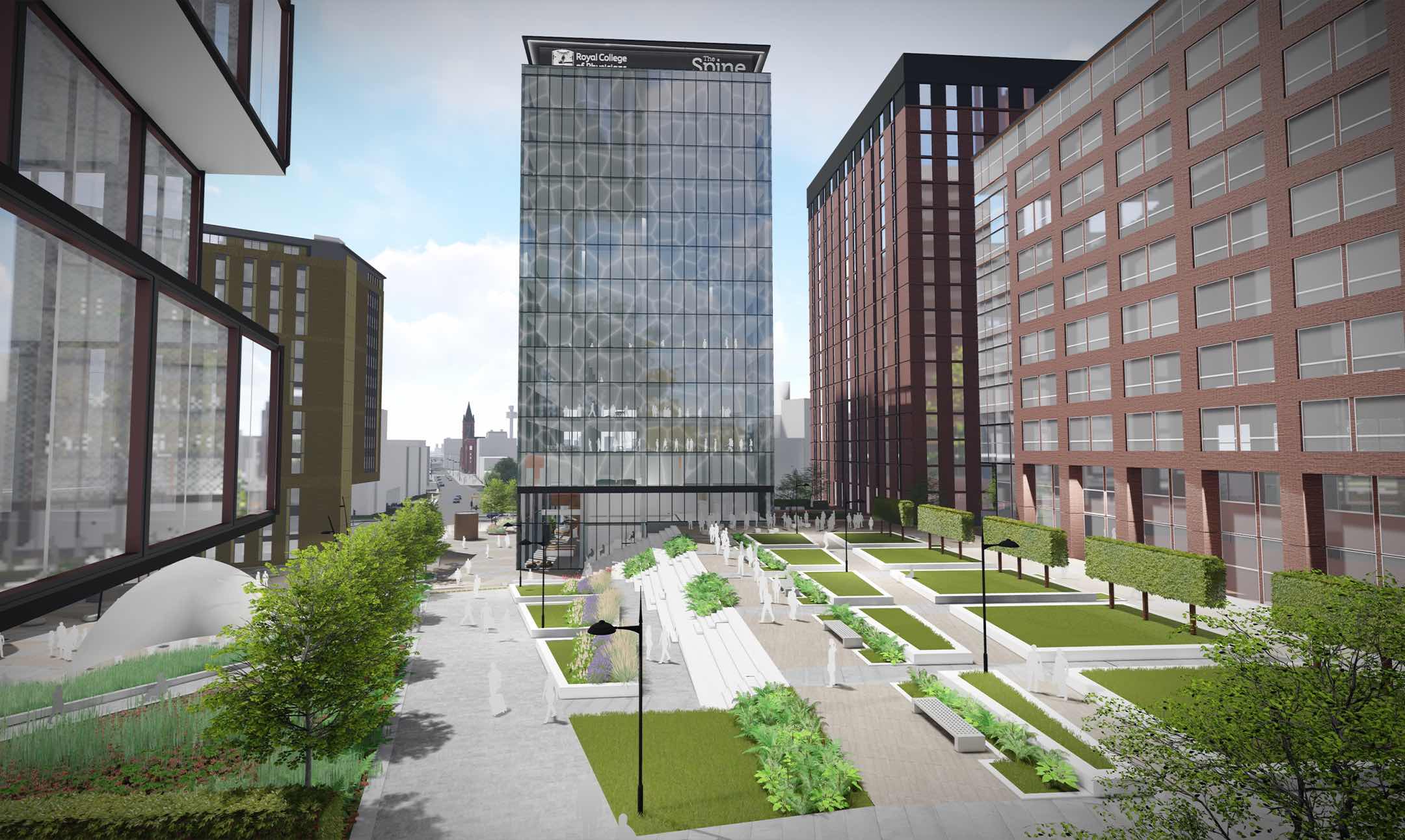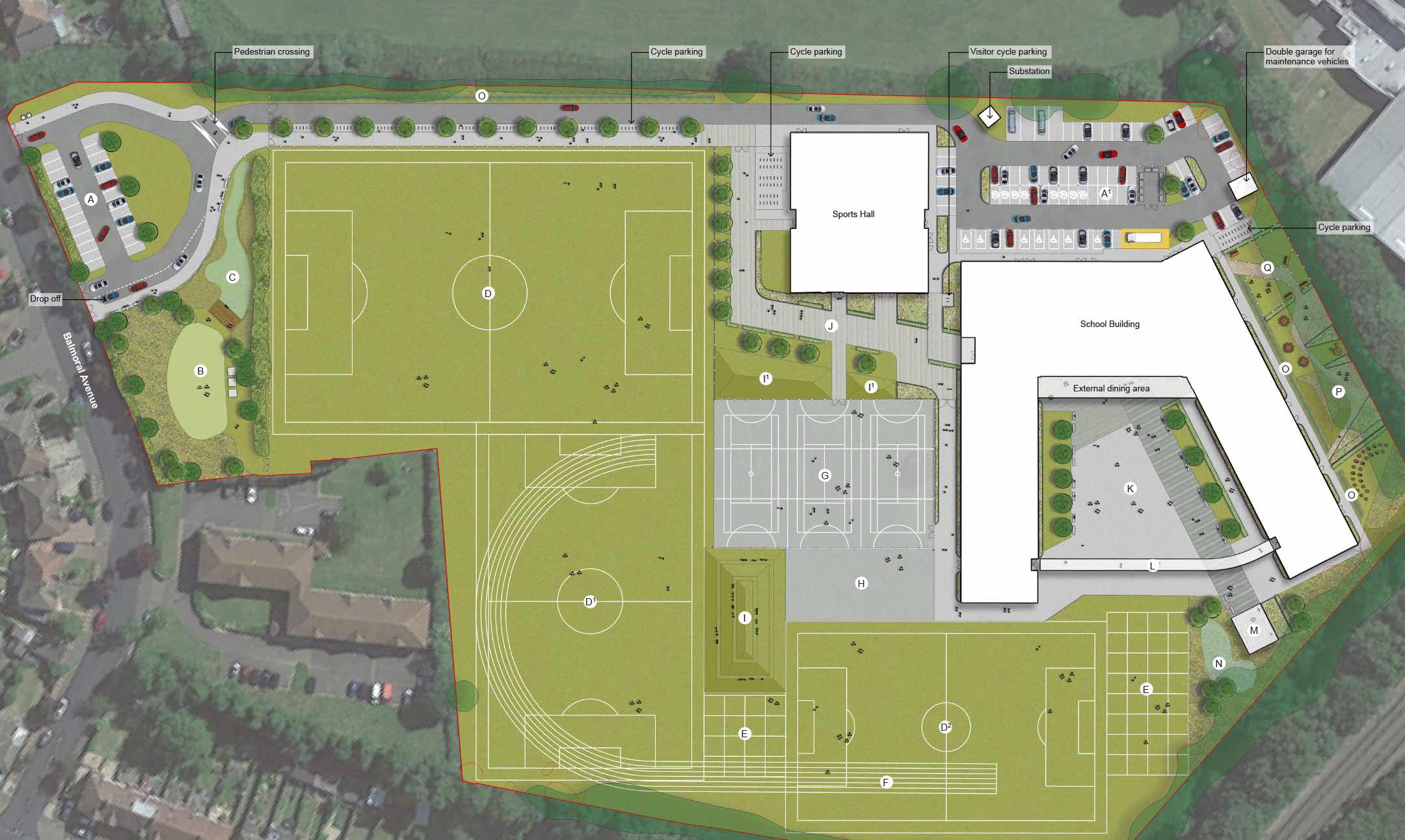
"We were loading drawings with intelligent and quantifiable information. It was really useful.”Sam Bailey, Senior Landscape Architect at Ares Landscape Architects Ltd
Merging Past and Future
Nottingham College is the result of joining two preexisting colleges — New College Nottingham and Central College Nottingham — developed as part of the regeneration efforts of the Nottingham City Centre. Envisioned for both College students and the community to enjoy, the new proposed City Hub is in close proximity to Nottingham’s public transport system, rail network, and the wider city’s green infrastructure. However, the constrained site needed to account for existing buildings and transport infrastructure, along with the proposed surrounding regeneration projects. They also encountered problems related to the landscape over structure as well as site conditions overall. Additionally, as part of their BIM requirements, the firm needed to collaborate with the wider design team efficiently and effectively.
In order to achieve BIM Level 2 requirements (and to reach their target completion date of May 2020), Ares used Vectorworks Landmark to facilitate the delivery of the project’s BIM execution plan (BEP). According to Sam Bailey, Senior Landscape Architect and BIM coordinator at Ares, using Landmark helped “speed up the time involved in project drafting and data reporting since the two processes are integrated, while providing useful information for other parties involved.” Although they were interfacing with collaborators using different software programs, Bailey claims that “IFC became the common denominator” and by defining BIM requirements out of the gate, the firm could clearly state expectations tied to the IFC models.
“We were loading drawings with intelligent and quantifiable information,” said Bailey. “It was really useful.”
Another useful time-saving step was setting classes in the model file during early stages of the project. “It speeds up the drafting process and takes a lot of the thinking out of it,” Bailey explained. In fact, Ares is currently developing templates that are available across their different office locations as a training tool for junior employees who may be new to working in BIM.

From 2D to 3D
For the Nottingham City Hub, Ares fully embraced the 2D to 3D functionality of Vectorworks. Using features such as the Hardscape Tool, the 3D Polygon Tool, and the Plant Tool, Bailey could easily draw, adjust, edit, and replace elements of the model as needed. He could also edit the look of the graphical representation by a simple click of a button, which automatically changes the information attached.
“All of the information is embedded in the object,” Bailey said. “If something should change, such as a plant species, it can be replaced easily.” That same information can then be seamlessly transferred to a worksheet, which Bailey has used for things such as plant schedules, clearly laid out in a table that immediately updates as needed.
And for landscape architects who would rather input plant information manually, that option is available. Bailey and his colleagues can attach data such as the plant’s Latin name, common name, and anything else that the designer or the contractor may need.

All of the information is embedded in the object. If something should change, such as a plant species, it can be replaced easily.Sam Bailey, Senior Landscape Architect at Ares Landscape Architects Ltd
Import/Export Made Easy
In their plans for a roof terrace, Bailey was able to easily change elevations through design layers — and export it just as easily as one model with those proper elevations left intact. When working with the project Architects, the ability to specify stories in this nature is invaluable.
In a different phase of the project, Ares needed an export option to send files that can be read by other software programs. Nottingham College required COBie data and a Federated Model for their records; the firm was able to submit this information. By using the Object Information Palette (OIP) in Vectorworks, Ares can edit IFC data to ensure it matches the COBie information as required by multiple parties, including Information Managers across the site, the Architects on the project, and the firm’s own landscape architects.

Forerunners of the BIM Arena
Ares Landscape Architects was able to meet a government requirement while simultaneously becoming a pioneer in the growing arena of BIM for landscape architecture. Through several helpful toolsets from Vectorworks Landmark, Ares significantly streamlined their workflow with a singular, all-in-one solution. As demonstrated through their work with conceptualizing and planning Nottingham City Hub, Ares proved that integrating BIM is not only possible to achieve expected results, but also has the potential to make a lasting impact on the field — thanks to Vectorworks Landmark.
Stay in the know with the latest insights
Subscribers receive news, customer stories, success and learning tips, event information, and other important announcements from Vectorworks.
By submitting this form, you agree that Vectorworks, Inc. and its authorized partners may contact you in regards to news, offers, and the use of our software, services, and platforms. Learn more about our privacy practices and your data on our privacy page.*